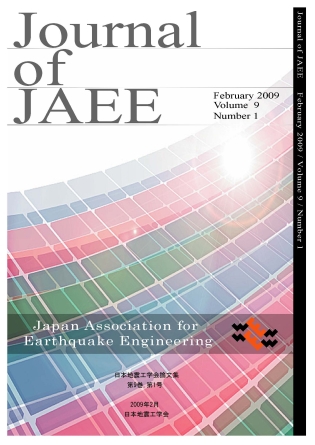Volume 14, Issue 2
Displaying 1-12 of 12 articles from this issue
- |<
- <
- 1
- >
- >|
Technical Papers
-
2014Volume 14Issue 2 Pages 2_1-2_15
Published: 2014
Released on J-STAGE: May 23, 2014
Download PDF (2317K) -
2014Volume 14Issue 2 Pages 2_16-2_36
Published: 2014
Released on J-STAGE: May 23, 2014
Download PDF (2204K) -
2014Volume 14Issue 2 Pages 2_37-2_46
Published: 2014
Released on J-STAGE: May 23, 2014
Download PDF (477K) -
2014Volume 14Issue 2 Pages 2_47-2_66
Published: 2014
Released on J-STAGE: May 23, 2014
Download PDF (7523K) -
2014Volume 14Issue 2 Pages 2_67-2_83
Published: 2014
Released on J-STAGE: May 23, 2014
Download PDF (4771K) -
2014Volume 14Issue 2 Pages 2_84-2_103
Published: 2014
Released on J-STAGE: May 23, 2014
Download PDF (1758K) -
2014Volume 14Issue 2 Pages 2_104-2_123
Published: 2014
Released on J-STAGE: May 23, 2014
Download PDF (1683K) -
2014Volume 14Issue 2 Pages 2_124-2_143
Published: 2014
Released on J-STAGE: May 23, 2014
Download PDF (6337K)
Technical Reports
-
2014Volume 14Issue 2 Pages 2_144-2_163
Published: 2014
Released on J-STAGE: May 23, 2014
Download PDF (4454K) -
2014Volume 14Issue 2 Pages 2_164-2_180
Published: 2014
Released on J-STAGE: May 23, 2014
Download PDF (999K)
Technical Notes
-
2014Volume 14Issue 2 Pages 2_181-2_184
Published: 2014
Released on J-STAGE: May 23, 2014
Download PDF (1044K) -
2014Volume 14Issue 2 Pages 2_185-2_189
Published: 2014
Released on J-STAGE: May 23, 2014
Download PDF (468K)
- |<
- <
- 1
- >
- >|
